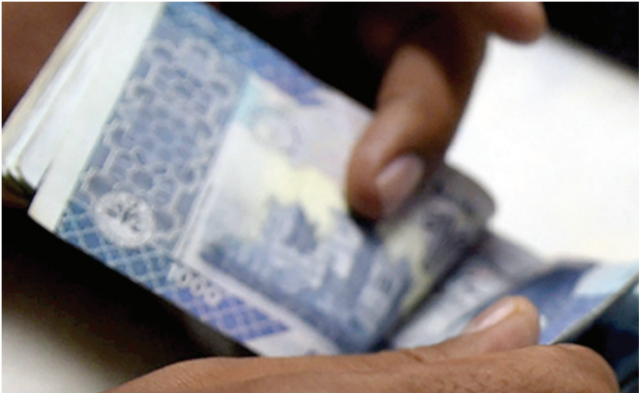Bank credit to private sector stands low
Financial institutions continue to make safe lending to govt

Commercial banks in Pakistan have failed to attract new deposits from accountholders, but have continued to increase safe lending at exorbitant returns to the cash-strapped government compared to lower credit offers to private sector for economic activities.
Deposits improved 0.2% to Rs22.15 trillion in August 2022 compared to Rs22.10 trillion in the prior month. Deposits, however, were significantly lower compared to the record high of Rs22.81 trillion recorded in June 2022, according to the central bank and brokerage houses’ data.
Banks, however, managed to increase risk-free lending to the government (through investment in sovereign debt securities) by 3.3% to a new peak of Rs18.18 trillion in August compared to Rs17.60 trillion in July.
Consequently, the banks’ investment-to-deposit ratio (IDR) hit a high of 82.1% in August compared to 79.7% in the previous month.
“Banks have managed to increase lending to the government through borrowing from the central bank (as the growth in deposits remains slow),” Arif Habib Limited economist Sana Tawfik said while talking to The Express Tribune.
She elaborated that the central bank had continued to inject money into commercial banks through the open market operations (OMOs). Commercial banks acquire financing from the central bank at a comparatively lower interest rate and lend the same to the government at a higher rate. The practice has supported the banks in increasing their IDR.
She said banks had failed to increase the deposits of accountholders amid economic slowdown in the country. Government measures to cool down the overheated economy at the onset of current fiscal year in July 2022 and later the emergence of devastating floods have impacted economic activities.
Secondly, slowdown in the inflow of worker remittances to $2.5 billion in July compared to over $2.7 billion in previous months also restricted the deposit growth.
“Historical evidence suggests that the growth in worker remittances has remained a big reason for the increase in bank deposits,” she said.
The central bank and brokerage houses’ data suggests that banks’ lending to the private sector inched up to Rs10.92 trillion in August 2022 compared to Rs10.86 trillion in the prior month.
The growth in credit to the private sector remained unsatisfactory after the cost of lending increased significantly as the central bank jacked up its key policy rate by 800 basis points to 15% from September 2021 to July 2022.
A sluggish growth in credit to the private sector pushed the advances-to-deposit ratio (ADR) to 49.3% in August compared to 49.1% in July.
One can easily notice the poor banking practices by taking a look at the IDR that peaked at 82.1% compared to the ADR at 49.3% in August.
Banks have continued to do safe banking through extending loans to the government, which is measured by the IDR, compared to sluggish lending to the private sector (ADR), which is primary the function of banks around the world to support economic activities.
Tawfik said credit to private sector had got some traction after the central bank introduced subsidised loan schemes for industrialisation for a limited period during the Covid-19 pandemic.
Besides, the previous federal government imposed additional taxes on banks that failed to increase lending to the private sector.
She recalled that the government imposed 5% additional tax on those banks whose ADR stood below 40%, 2.5% on those whose ADR was higher than 40% but less than 50%, while there was no additional tax on banks having ADR of 50% or above.
Published in The Express Tribune, September 13th, 2022.
Like Business on Facebook, follow @TribuneBiz on Twitter to stay informed and join in the conversation.



















COMMENTS
Comments are moderated and generally will be posted if they are on-topic and not abusive.
For more information, please see our Comments FAQ